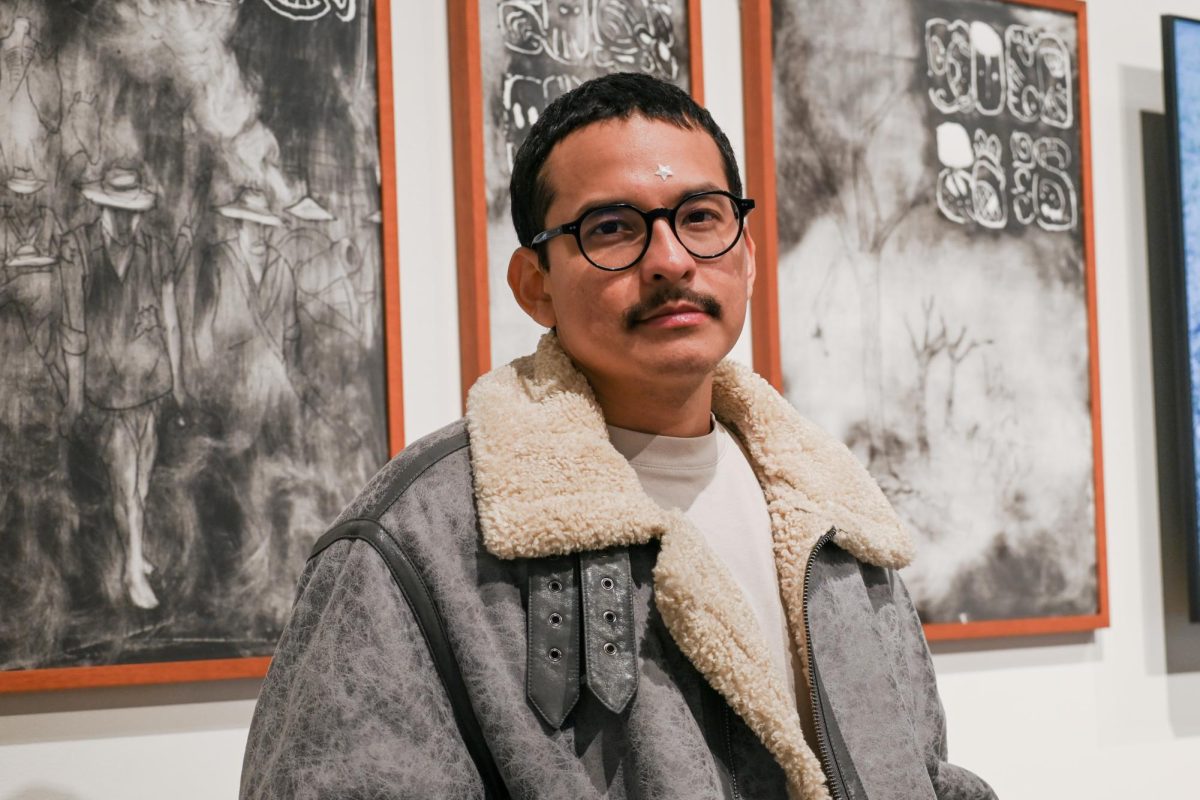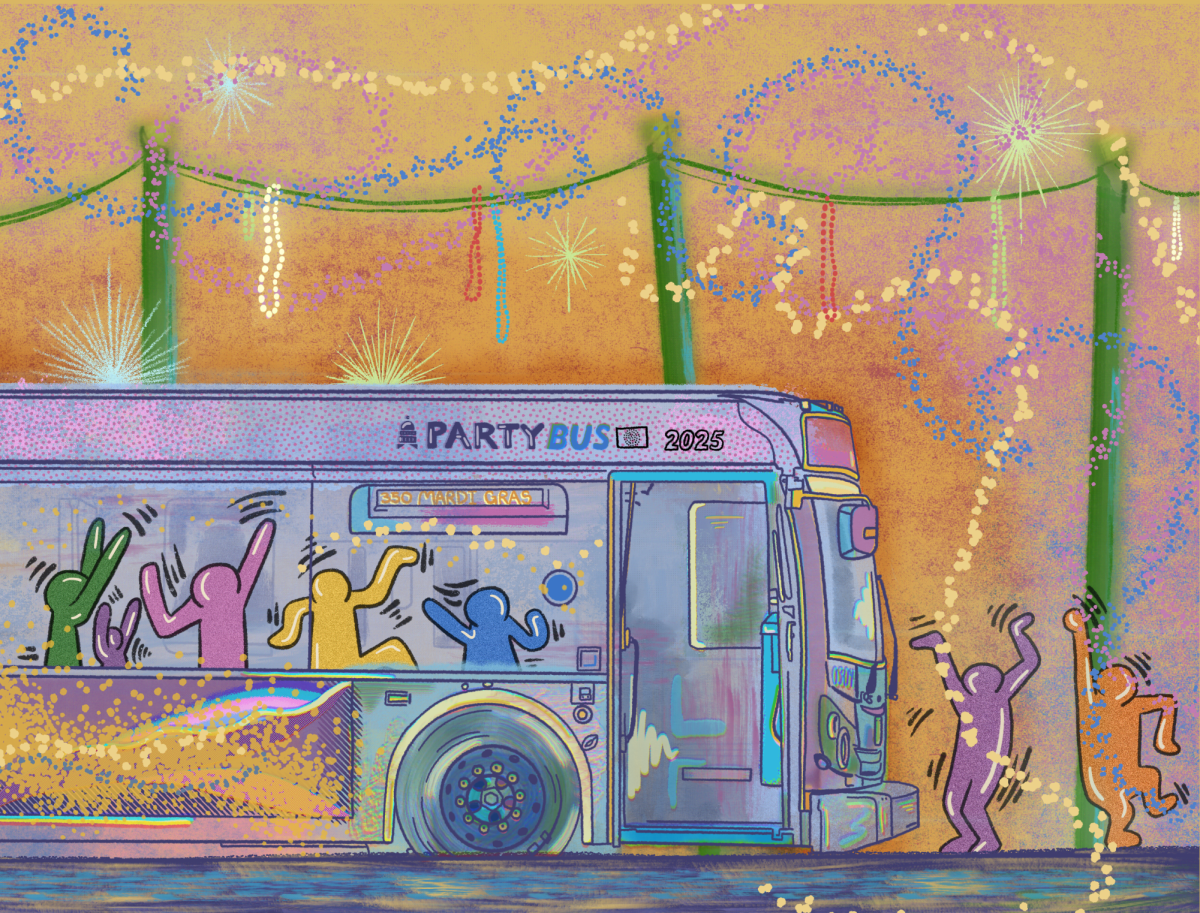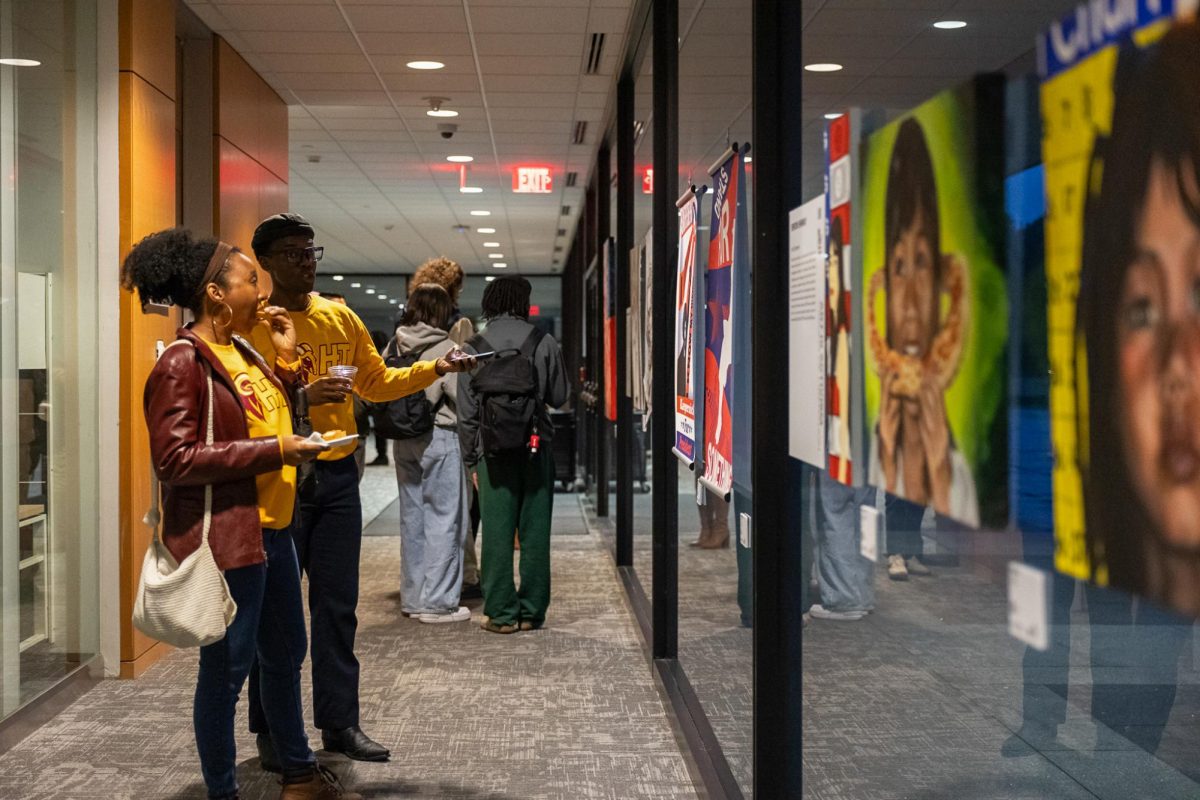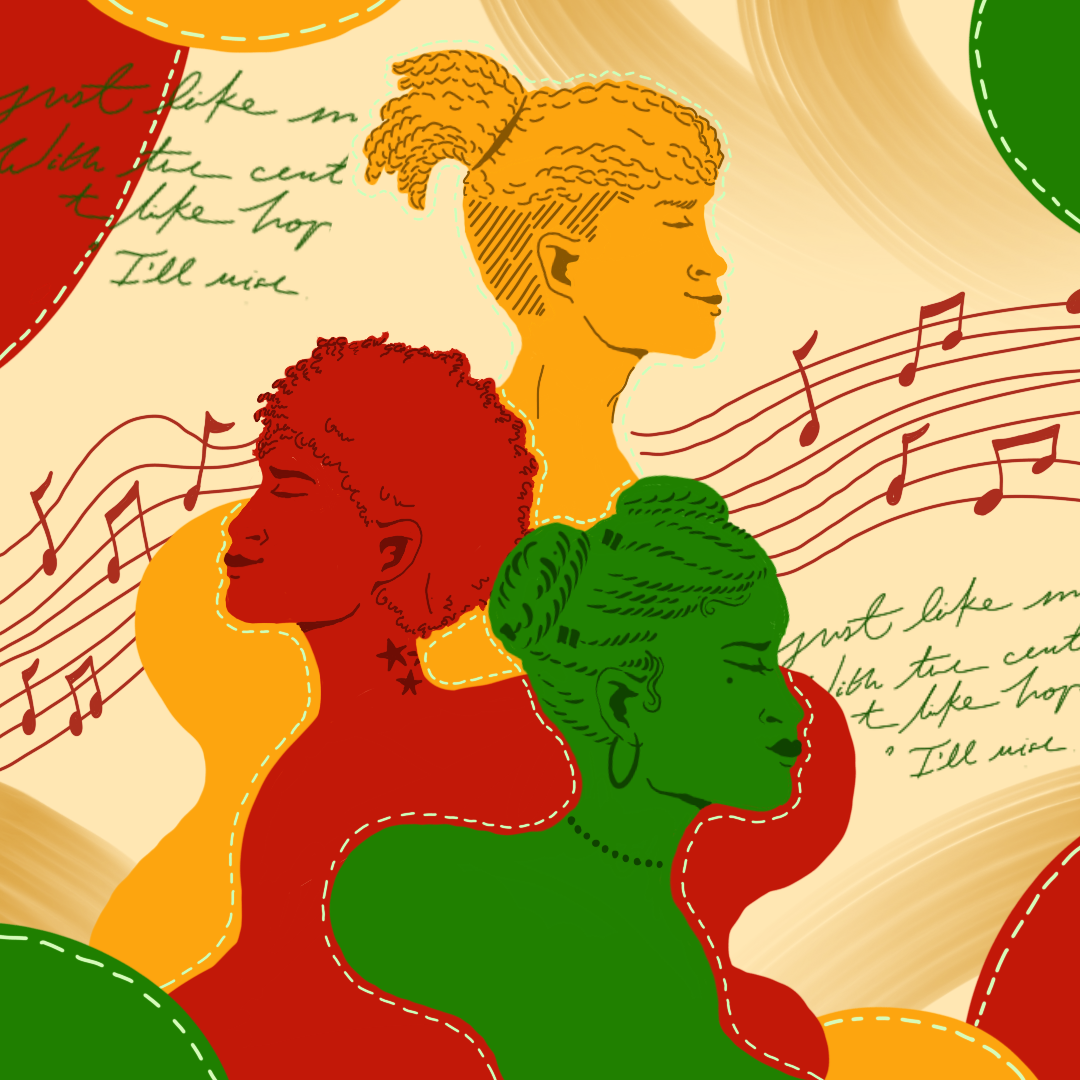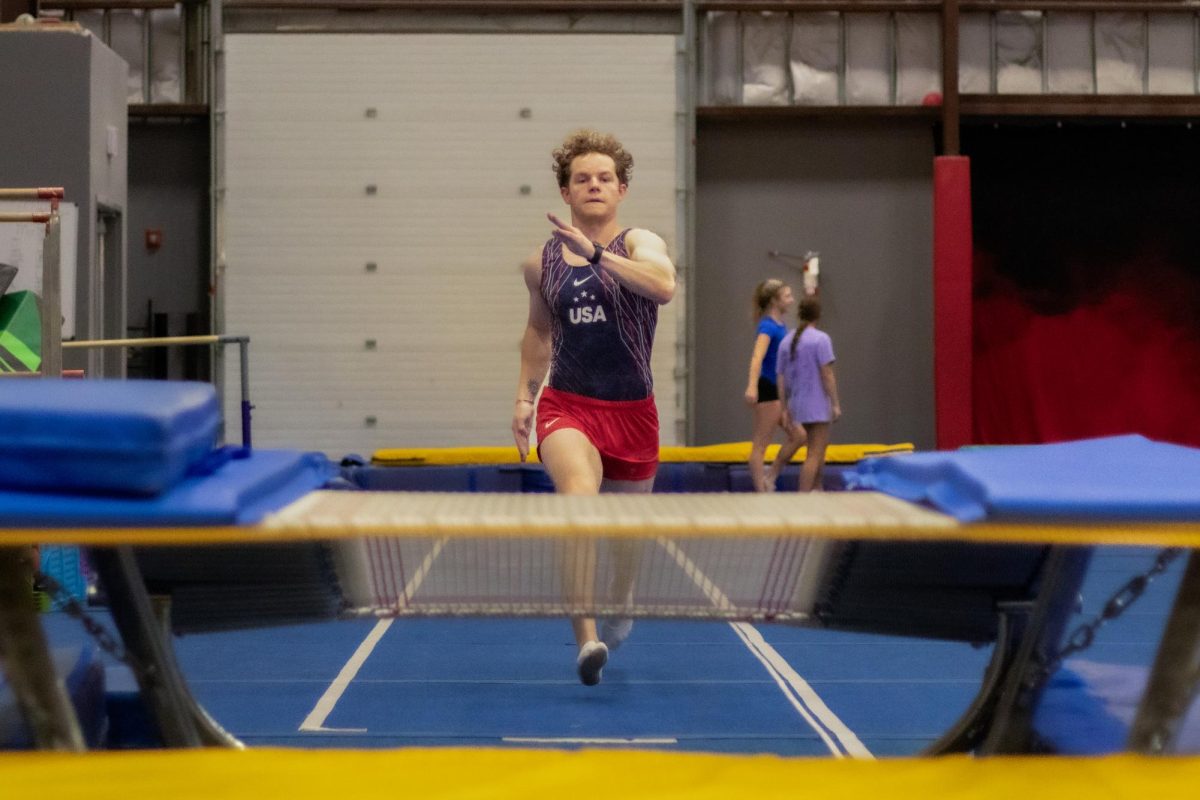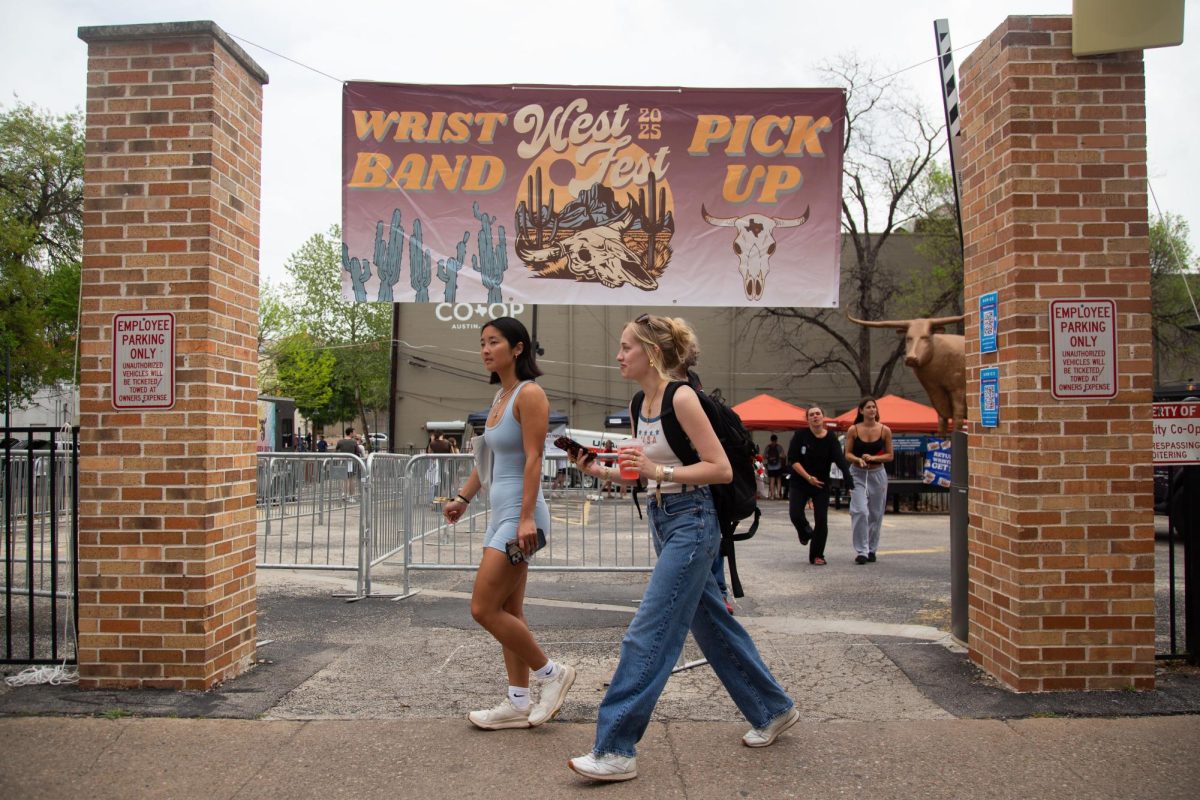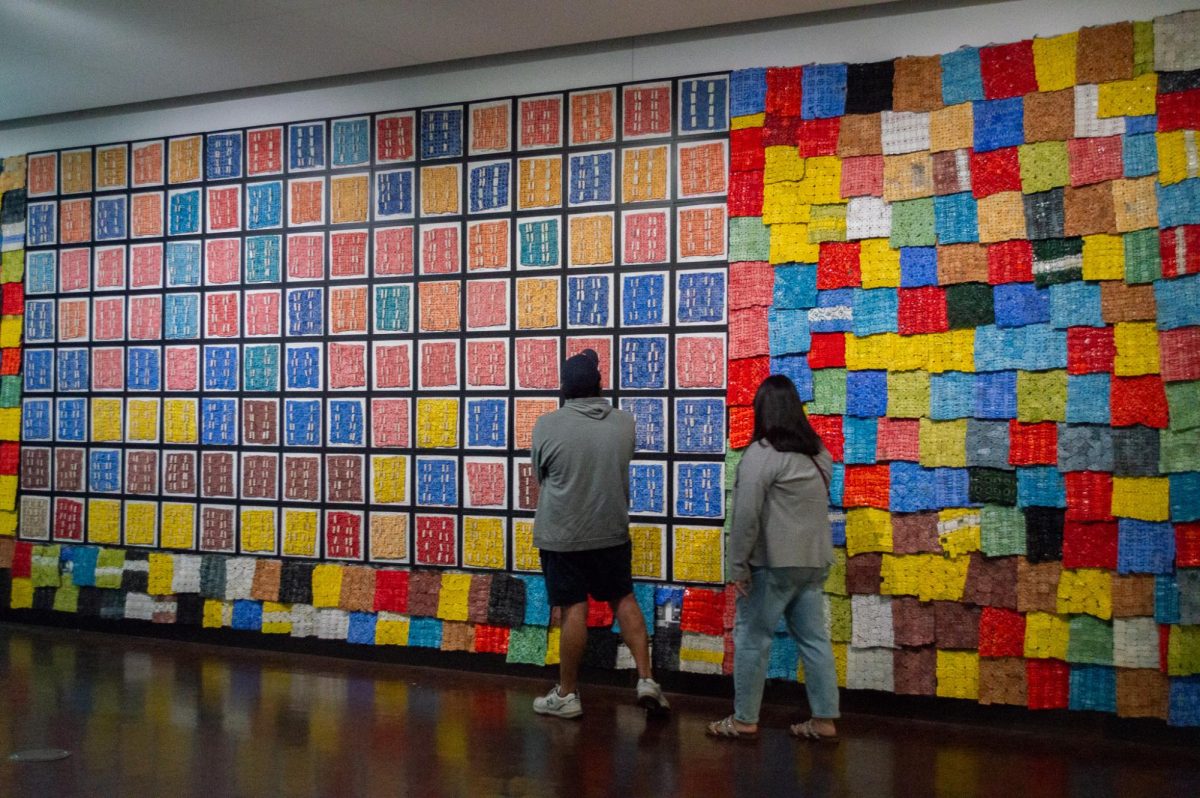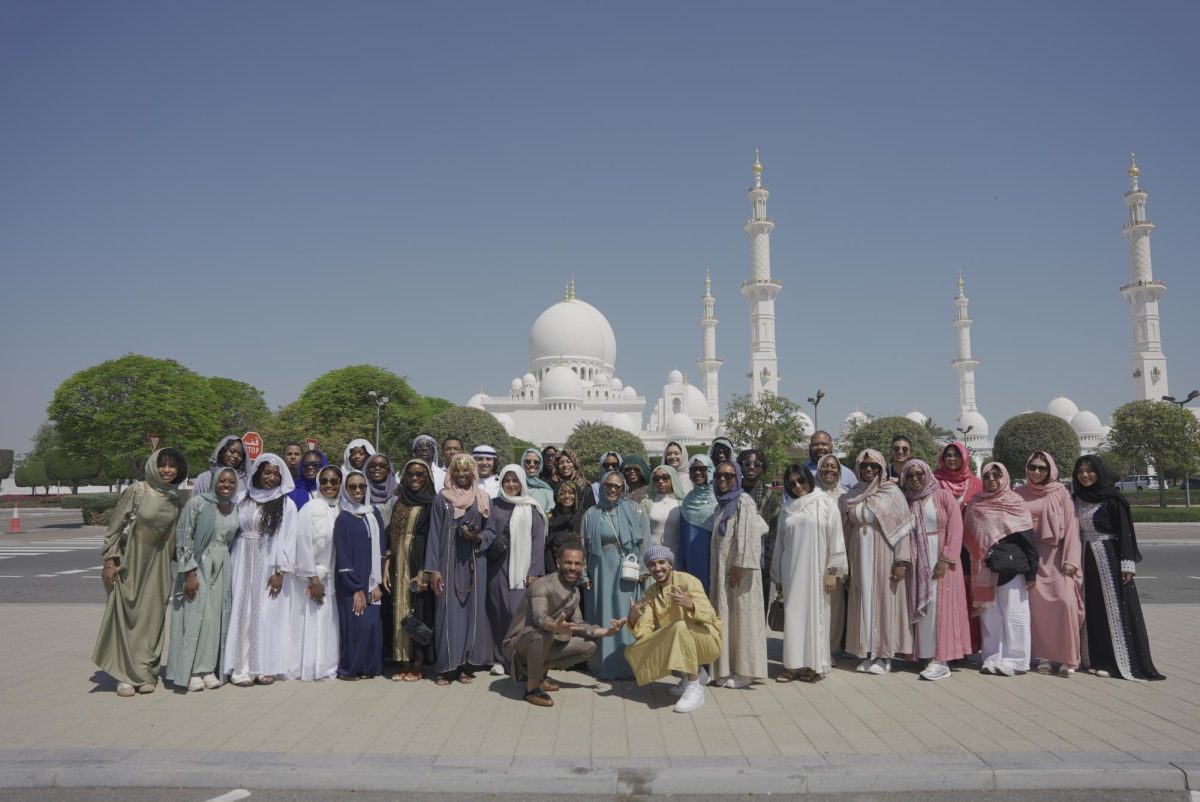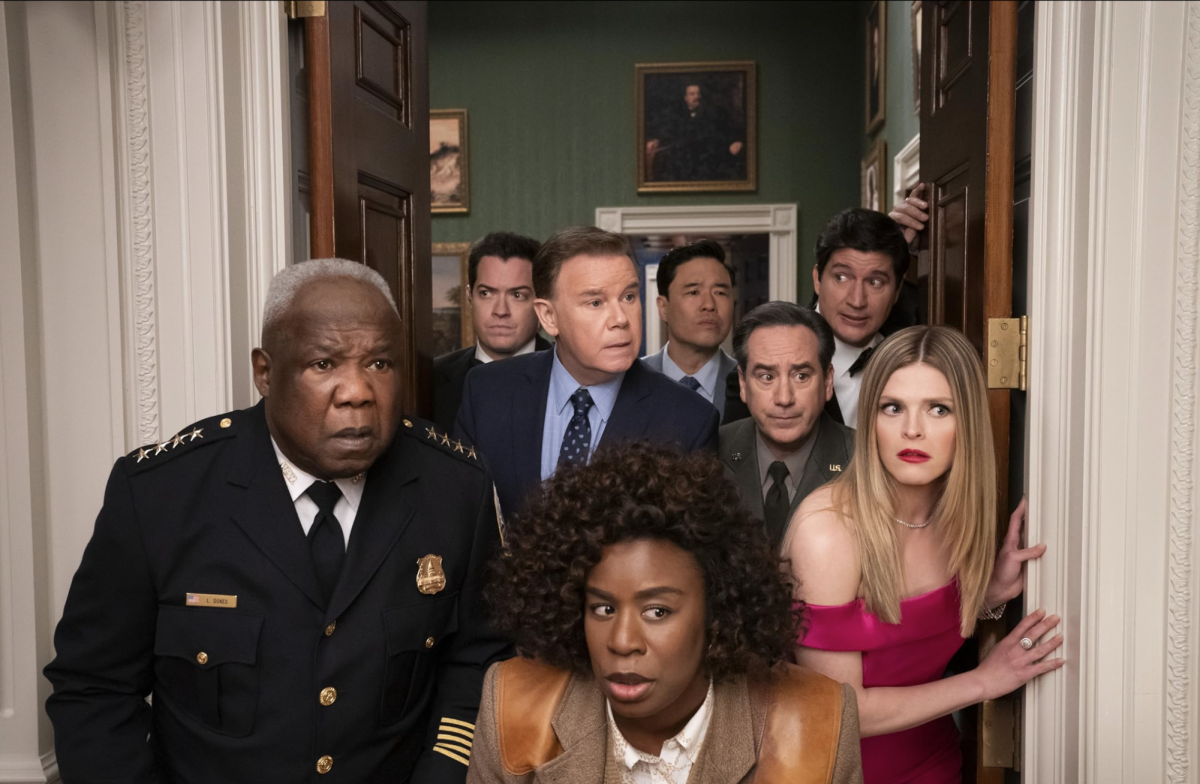Walking into the Visual Arts Center, visitors are faced with a large reproduction of a construction tarp. Cut into it, a Mayan poem, “Deep Cavern, Invisible Work,” highlights the barrier between the predominantly white student body at universities and the Latino workforces behind them. Around the corner, visitors will find a recreation of a Mayan dagger and a monument to the Mayan soldiers in the Mexican army who died in Texas.
The exhibit’s creator, Pablo Tut, is UT’s 2024-25 St. Elmo Arts resident and fellow and is born of Mayan ancestry in the Yucatán Peninsula. Tut sat down with The Daily Texan to discuss his residency and exhibition.
The Daily Texan: What has it been like to come to UT?
Pablo Tut: I’m happy to be able to connect with students. … Considering the political reality of Texas, I try to give students the tools to display their own voice as freely as they can. It’s been nothing but appreciation from the students (for) the way in which I approach teaching in a classroom.
DT: What was your reaction when you found out that you got the fellowship and the residency?
PT: To be honest, scared, because I’d never been to Texas before. It’s tough to figure out moving to a new town after finishing the MFA, and then programming a class and then having to develop new artwork for a show that came super fast. … I wouldn’t have finished the project that I did for the show if it wasn’t for all the help that the people at UT gave me.
DT: Can you tell me about “Land Invention”?
PT: Humans socially generate landscapes and land, in a way. Because there’s ways we have a relationship to it, ways we create paths to go to it. I was thinking (about) the creation of Texas that has been this violence orchestrated by two nation states, the United States and Mexico, and in that way, basically generating how this land has been invented. I feel like the current politics of the world kind of point to that. … It plays around the history and significance of spaces being altered, changed and constructed. … The monument for the Mayan people at Refugio, Texas, … (is) born out of a collaboration I have with a friend … José Koyoc. (His research found that) a group of Mayan men were conscripted to the Mexican military army during the time of the Texas Revolution … from the Peninsula Yucatán. … The conditions in which they were treated were (poor). Six of them are buried in Refugio, Texas, which is a town three hours away from Austin.
DT: Why is this project important to you?
PT: It’s a history that not many people know about, (and) probably a history that people from Yucatán also don’t know about. To me, it’s been about approaching this history using Mayan knowledge, specifically Mayan calligraphy and Mayan research … to (create) a project that speaks about this history (and) brings Mayan aesthetics to the present through contemporary arts.
It’s a privilege to work with Koyoc and be able to know more about the history of the place I’m from and share it here, which, at the same time, is part of the history of Texas.

